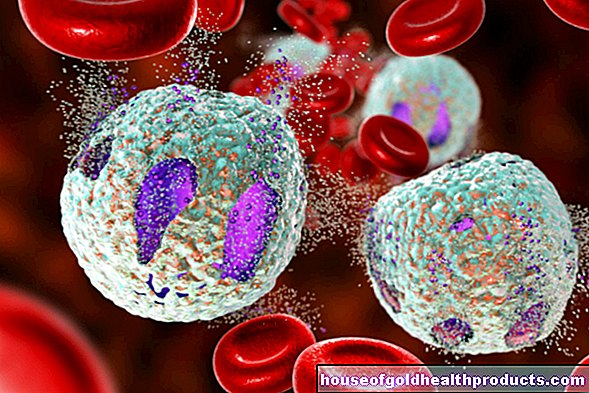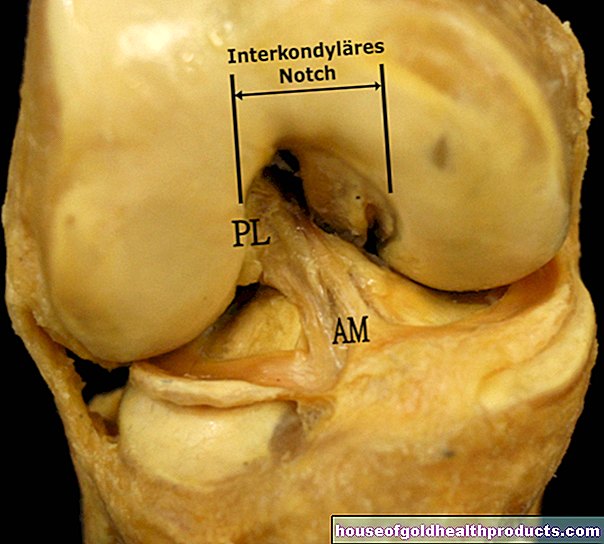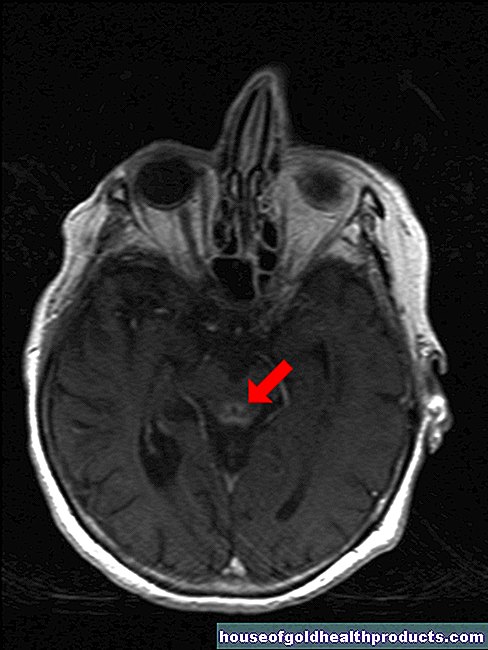Ovulation test
Nicole Wendler holds a PhD in biology in the field of oncology and immunology. As a medical editor, author and proofreader, she works for various publishers, for whom she presents complex and extensive medical issues in a simple, concise and logical manner.
More about the experts All content is checked by medical journalists.An ovulation test promises to show the monthly ovulation (ovulation) and thus the fertile days quickly and safely. Similar to a pregnancy test, it measures the increase in a hormone in the urine. But how safe is such a test? Read here how an ovulation test works exactly and how to use it correctly, what the result says and what fluctuations the test result is subject to.

What is an Ovulation Test?
An ovulation test (LH test, ovulation test) is an over the counter test system that is intended to help women determine their ovulation as easily and safely as possible and in this way to identify their fertile days. Getting pregnant quickly should be so easy, promise the various providers. In fact, studies have shown that ovulation tests can achieve higher pregnancy rates.
Ovulation tests are available in different costly versions as simple test strips (from around 20 euros) or in the form of small fertility computers (up to around 200 euros).
How does an ovulation test work?
An ovulation test works in a similar way to a pregnancy test - some urine on the test strip and shortly afterwards the result can be seen from the discoloration. In the ovulation test, this is whether you are about to reach your fertile days (periovulatory phase).
To do this, the test measures the concentration of the luteinizing hormone (LH) that triggers ovulation. About 24 to 36 hours before the egg cell is released from the ovary (ovulation), this hormone rises significantly in the urine and can be visualized on the test strip with the help of antibodies against LH. Simpler tests show this sudden increase on the basis of double stripes. Modern devices even have a digital display. Some test procedures also determine the estrogen or estradiol level.
Ovulation test: application
Performing a test every day can be annoying and expensive in the long run. To narrow down the ovulation window, you should first determine your cycle length: Count the days that pass from the first day of your period to the onset of the following period. The length of the cycle determines when you need to use the first test strip for the ovulation test so as not to miss ovulation. With an average cycle length of 28 days, ovulation takes place around the 11th day after the start of menstruation.
If you've just stopped taking the pill or other hormonal contraceptive, your cycle may still be irregular. This can make it more difficult to determine the cycle length and thus the appropriate time to start the test. Then use the shortest cycle as a guideline. So you shouldn't miss the fertile days.
You can either hold the test strip directly under the urine stream for a few seconds or in a beaker with the urine collected beforehand. Depending on the provider, the result will be visible in the display field after about five to ten minutes.
Here are a few more tips for a correct test result:
- Before the ovulation test, you should not urinate or drink excessively for a few hours so as not to dilute the LH content in the urine.
- If possible, always carry out the measurement at the same time.
- Sometimes morning urine is recommended for the ovulation test. However, before use, carefully read the package insert for the test system you are using.
Ovulation test in the cycle
In the normal course of the cycle, the LH levels rise and fall. However, the concentrations in the various cycle phases can vary greatly from woman to woman.
If the test works, it shows the following results depending on the cycle phase and LH value (specification of the LH concentration in units per liter):
|
time |
LH value |
Ovulation / test result |
|
Ovulation test after menstruation (follicular phase) |
2-6 U / l |
negative |
|
Ovulation test around ovulation (ovulation phase) |
6-20 U / l |
positive |
|
Ovulation test after ovulation (luteal phase) |
3-8 U / l
|
negative |
Ovulation test negative
Depending on the personal cycle length, each woman starts on a different day with the first test strip. At the beginning of the series of measurements, the ovulation test should always be negative, as the luteinizing hormone has not yet risen sufficiently. If the ovulation test always remains negative on the following days, there may be no ovulation in this cycle. But it can also be that the hormone level increases only slightly in the course of the cycle. The test method used is then not sensitive enough to indicate this slight increase. In this case, the ovulation test is negative even though ovulation is imminent.
If you observe this over several cycles, you should consult your gynecologist. This can determine your LH value in a laboratory analysis. Either the test used is actually not sensitive enough for your LH value or an underactive ovary (ovarian insufficiency) always results in a negative ovulation test (e.g. in the case of Kallmann syndrome, anorexia, taking the pill).
Ovulation test positive
If the ovulation test in the follicular phase was negative, the LH level in the urine skyrocketed shortly before ovulation. In the best case scenario, a clearly positive signal appears on the test strip. The hormone is now present in the urine in a sufficiently high concentration. If the ovulation test is positive, ovulation is imminent. A weak line indicates a low LH level.
After ovulation, the LH content in the urine should decrease again and the ovulation test should become negative. Sometimes, however, the ovulation test always remains positive. This can be due to an underactive ovary (primary ovarian failure), polycystic ovaries or the onset of menopause. Menopausal women have LH levels above 30 U / L.
Ovulation test positive: how long fertile?
If the ovulation test is positive, there is not much time left. The egg "jumps" about 24 to 36 hours after the LH surge. Once the mature egg has left the ovary, it can only be fertilized for about a day. If you have a child, you should therefore have unprotected sexual intercourse within the next 24 to 48 hours.
With other natural methods of family planning (such as the temperature method, Billings method), the relatively narrow time window can be increased, as these indicate ovulation a little earlier and sperm can survive in the woman's body for up to five days.
How Safe is an Ovulation Test?
Positive or negative - the test is not always correct. On the one hand, individually different LH levels in combination with the sensitivity of the ovulation test used can be the reason that one test works well for one woman and not for the other. Sometimes it therefore helps to try out different providers in parallel. The time of the measurement can also influence the result. The LH concentrations in urine can fluctuate over the course of the day.
On the other hand, drugs (antibiotics, psychotropic drugs, hormone preparations) and diseases of the liver, kidneys or ovaries can also impair the safety of the ovulation test.
Ovulation test for contraception?
If the ovulation test shows the fertile days, it should also be possible to identify the infertile days. So can an ovulation test be used for contraception?
The answer is - better not. Due to the uncertainties of the test systems and cycle fluctuations, an ovulation test alone is not a safe form of contraception. It can only help with contraception as a supplement to the other natural family planning methods (such as the Symptothermal method) - especially women who cannot tolerate hormonal contraceptives (e.g. due to migraines, thrombosis, stroke).
So in good time before the fertile days, you must choose another form of contraception or practice abstinence. Of course, the ovulation test does not offer protection against sexually transmitted diseases either.
Ovulation test as a pregnancy test?
Some women use the ovulation test as a pregnancy test to detect fertilization at a relatively early stage. In principle, this is possible because the pregnancy hormone hCG (human chorionic gonadotropin) is structurally similar to LH and can therefore also bind to the LH antibodies on the test strip. This means:
If you are pregnant, the hCG concentration increases exponentially, so that an ovulation test in pregnancy can be positive. Unfortunately, it cannot be said without a doubt whether it is actually the pregnancy hormone and not LH. Ultimately, an ovulation test can only "oracle" whether there is a pregnancy, but only a proper pregnancy test or a visit to the gynecologist can provide certainty. By the way, it doesn't work the other way around either: A pregnancy test is not suitable as an ovulation test.
Tags: fitness elderly care first aid



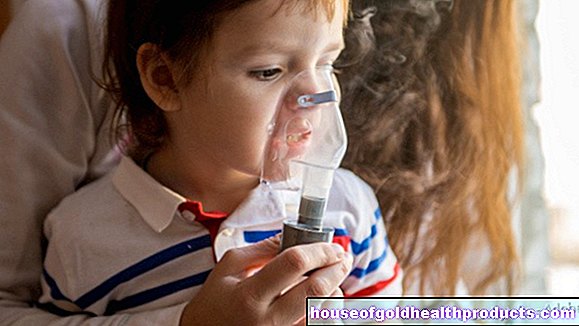
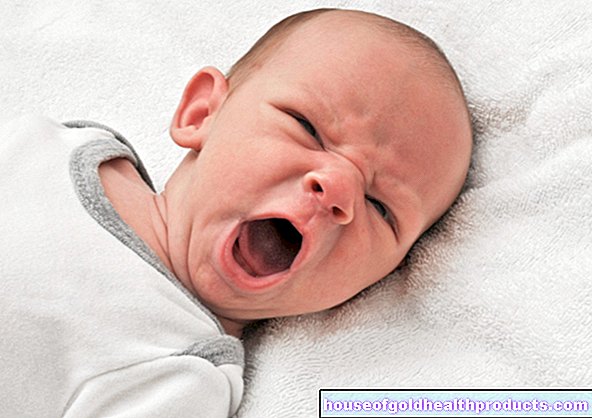
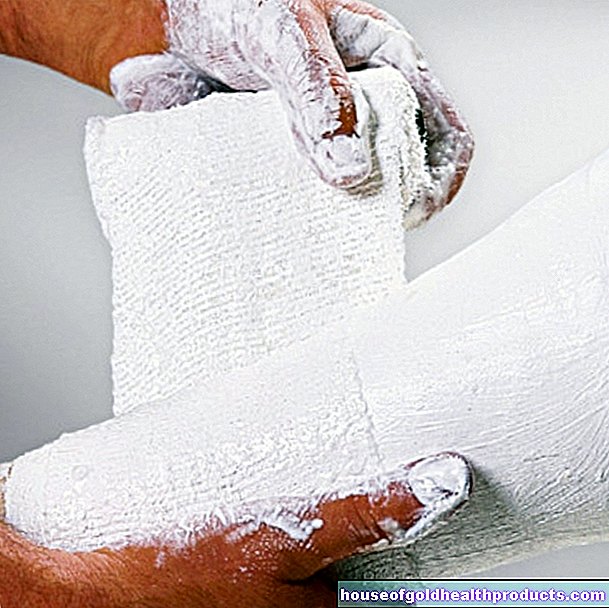
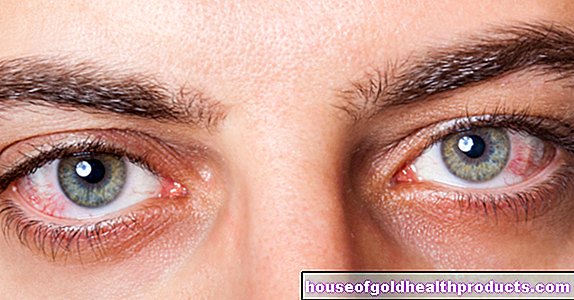
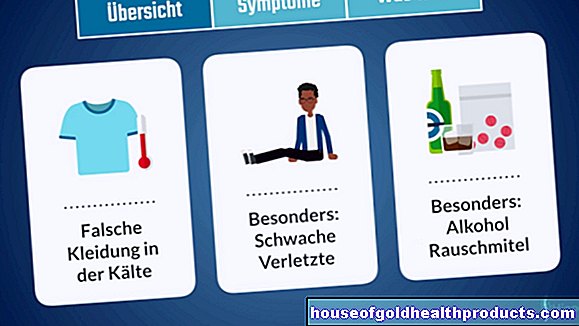

-mit-mickymaus-am-tannenbaum.jpg)



